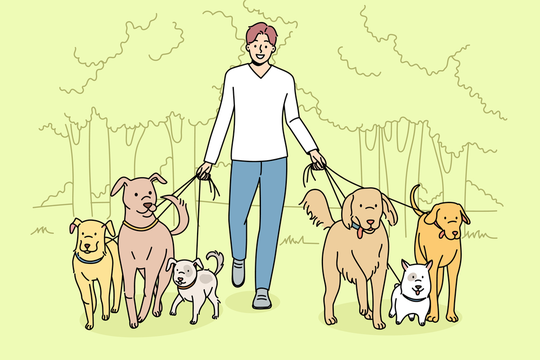


Walking your dog is more than just a routine; it's a chance to strengthen the bond between you and your furry friend while ensuring they get the exercise they need. In this comprehensive guide, we'll explore the nuances of successful dog walking, covering everything from leash handling to accommodating the unique needs of different breeds. Let's embark on a journey to make your walks enjoyable and beneficial for both you and your canine companion.
A well-behaved dog on a leash is a joy to walk. Start by choosing the right leash for your dog's size and temperament. For larger dogs, a sturdy, non-retractable leash might be ideal, while smaller dogs may benefit from a lighter, retractable option. Learn the art of holding the leash with a relaxed grip, allowing for communication without tension.
Every dog is an individual with specific needs and preferences. Some dogs may be more energetic and require longer walks, while others may prefer shorter, more frequent outings. Consider your dog's breed, age, and health condition when planning your walks. A young, active dog might enjoy brisk walks or even a jog, while older dogs may prefer a slower pace.
Exposing your dog to different environments, people, and other dogs is crucial for their social development. During walks, provide controlled opportunities for socialization. If your dog is shy or excitable, start with shorter interactions and gradually increase exposure. Positive encounters contribute to a well-socialized and confident dog.
Understanding your dog's bathroom needs is fundamental. Choose appropriate spots for bathroom breaks, and always carry waste bags to clean up after your pet. Consistency in bathroom routines helps your dog feel secure and aids in housetraining.
Be mindful of weather conditions when planning your walks. Dogs, like humans, may be sensitive to extreme temperatures. In hot weather, walk in the cooler parts of the day and bring water to keep your dog hydrated. In colder weather, protect your dog from the cold with appropriate gear, especially for short-haired breeds.
Engage your dog's mind and body during walks through interactive activities. Bring a favorite toy or incorporate training exercises into your routine. This not only provides mental stimulation but also strengthens the bond between you and your dog.
Teach your dog polite greeting behaviors to ensure a positive experience for both parties. Discourage jumping and excessive barking. Reward calm behavior, and use treats or praise when your dog greets others politely.
Prioritize safety by using reflective gear during evening walks and avoiding busy roads. Keep your dog on a leash in areas where it's required, and be cautious around unfamiliar dogs. Understanding and respecting your surroundings contribute to a safe and enjoyable walking experience.
In conclusion, successful dog walking is an art that involves understanding your dog, mastering leash handling, and creating positive experiences. By incorporating these tips into your routine, you can turn each walk into a delightful adventure, fostering a stronger bond with your furry companion.